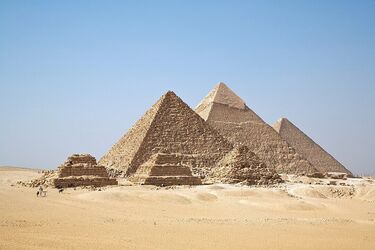Ancient city under the sands of Egypt: archaeologists uncover a mystery that raises questions

Researchers have claimed to have found the legendary Halls of Akheny in a vast underground city located beneath the pyramids of Giza. However, this hypothesis caused a lot of controversy in scientific circles.
Many archaeologists are skeptical of such claims and call them "fake," the New York Post reports . The expedition, which searched for the second largest pyramid on the Giza Plateau, was led by Italian scientist Corrado Malanga from the University of Pisa and Filippo Biondi from the University of Strathclyde in Scotland.
Using synthetic aperture radar (SAR) technology, the researchers were able to identify five small rooms inside the pyramid. According to the team's press release, a sarcophagus was found in one of these structures, which was previously mistakenly believed to be the tomb of the pharaoh.
The team of scientists announced the discovery of five previously unknown structures in the very center of the pyramid. These structures are connected to passages leading deeper into the pyramid and, according to experts, may hide secret rooms and wells under the ancient 4500-year-old architectural wonder.
The electromagnetic signals revealed an even more extensive underground infrastructure, reaching thousands of feet deep. Eight massive vertical structures were identified that are likely to be wells or mines. They are over 6500 feet wide and 2000 feet deep. The researchers also found that the entire structure contains a system of spiral tunnels leading to the dungeon.
The research team used a variety of data sources to create a 3D model that helps them assess what they believe is hidden from the human eye.
"When we improve the images, we will be able to prove that there is nothing more than a real underground city under the surface," said Corrado Malanga.
However, the lack of publications in peer-reviewed scientific journals has caused a wave of skepticism and accusations of possible falsification of the study.
Dr. Zahi Hawass, a renowned archaeologist and former Egyptian minister of antiquities, categorically rejected these claims, calling them "completely false" and "fake news."
"The information about the use of radar inside the pyramid is not true, and the methods used have no scientific evidence and have not been independently verified," Hawass emphasized.
Other scientists have also expressed their doubts. One of the researchers at the University of Denver noted that the conclusions drawn are "exaggerated" because the technology used is not advanced enough for such in-depth research.
Radar research specialist Lawrence Conyers does not rule out the possibility of the existence of underground rooms, but explains their origin by the historical significance of the area. He emphasized that these lands were sacred to ancient civilizations long before the pyramids were built.
Earlier we told you that
If you want to get the latest news about the war and events in Ukraine, subscribe to our Telegram channel!
